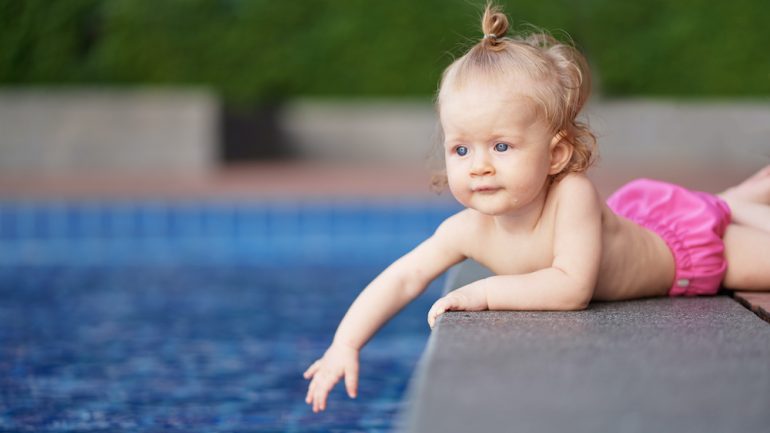It’s an unsettling topic but one that must be confronted: Children can drown. Drowning is the leading cause of unintentional injury-related death among 1- to 4-year old children and is also a leading factor with 10- to 19-year-olds. A child or at-risk adult can drown quickly and silently before caregivers even realize what is happening. Let’s dispel some myths about drowning and increase safety for the ones you love.
Misconceptions about drowning
Probably the most common and deadly myth about drowning is that the victim will yell for help and wave a hand to get attention. The reality is that drowning generally is silent and barely noticeable. Drowning people do not splash and yell. They bob briefly in one spot, then disappear.
Drowning overtakes a victim quickly. He often cannot touch the bottom, cannot swim or is panicked, and cannot start swimming. He can barely bob his head above water. He does not yell for help because each time his head goes above the surface, he is gulping for air.
Children often drown when parents take their eyes off them for just a few moments and lose track of where the child is. It is literally a matter of “He was right here just a minute ago.”
Where children have had swim lessons, parents may have too much confidence in their kids’ abilities. Young children need watchful supervision around water, even if they’ve had lessons.
At-risk adults, such as the handicapped and elderly, can also drown quickly before anyone knows something is amiss.
Important precautions
Take these precautions to help stop accidental drowning.
- If you own a pool, Install a separate fence around it, apart from and within your backyard fence. Many state and local building codes require this as part of building codes. The gate should be self-closing, and the latch at the top should be higher than little hands can reach.
- Put a chime on any house doors that open to the pool area. When you hear the chime, you know that someone has used that door. Install a deadbolt lock too high for children to reach for times when you can’t be aware of who is using the door.
- Never leave children alone near water. Don’t take shallow water for granted, including bathtubs, toilets … even buckets of water. The majority of lifeguard saves happen in water less than five feet deep.
- Know where your children are at all times. One common scenario in accidental child drownings is that no one was expected to be around the pool, but a child slipped away unnoticed.
- Children, non-swimmers and at-risk adults should wear U.S. Coast Guard-approved life jackets at all times when they’re near water.
- Adults should be within touching distance of young children when both are in the water. Parents sitting out of the pool should have eyes on the children at all times. It takes only a moment for a child to get into trouble in the water, so avoid being distracted by cell phones, eating, reading or conversation.
- Sign your children up for swim lessons at age 1. Have follow-up lessons annually to age 5.
- Take CPR lessons and learn what to do in a drowning emergency.
Related – Pools and Trampolines: Beware of the Risks


